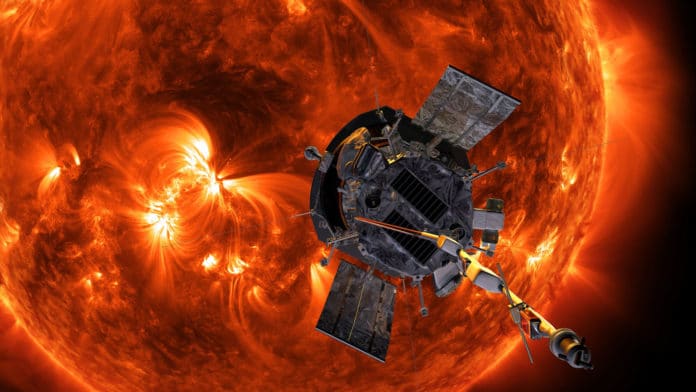Radiation in space takes the form of subatomic particles from the sun. Radiation exposure can be acute (a high dose in a short period of time) or chronic. Space radiation poses a dangerous threat to astronauts as well as satellites in space.
Now, scientists have discovered the origin of these hazardous radiations that are harmful to astronauts, satellites, and electronic equipment in space.
Scientists from the University of New Hampshire used data gathered by NASA’s Parker Solar Probe (PSP) and observed one of the most significant events so far during the mission. Their observations showed how plasma that is discharged after a solar flare could accelerate and accumulate energetic particles producing dangerous radiation conditions.
Nathan Schwadron, professor of physics in UNH’s Space Science Center, said, “We’re getting some of the earliest observations from this mission to the sun on how the coronal mass ejection—the sun’s release of plasma and energy—builds up particles released after solar flare events.”
“Because energetic particles are accelerated near the sun, by flying closer and getting a better look, we can observe the beginning of the energization process and see them start to pile up like snow that piles up in front of a snowplow. Instead of an actual snowplow, it is the coronal mass ejections released from the sun that cause the buildup of this material in space.”
For the study, scientists observed solar energetic particle events from April 18, 2019, to April 24, 2019, when two active regions near the sun’s equator became highly unstable, releasing several flares followed by coronal mass injections (CMEs).
Scientists observed the mind-boggling transaction between the flares, particle populaces, and CMEs, causing the pre-accelerated particles that are made by these solar events to get caught and heap up. The investigation features another period of the stimulation procedure that is basic for the formation of radiation risks.
Schwadron said, “We have known that these high-energy particles are energized in this region, but the missing link was how these particles buildup in the fronts of coronal mass ejections. It’s like imagining a room filled with bouncing tennis balls and asking how did they get there? The particles become so highly energized that they move at almost the speed of light and, as a result, can pose hazards in the form of harmful radiation that causes health issues for astronauts and damage electronic equipment in space.”
Journal Reference
- Seed Population Preconditioning and Acceleration Observed by the Parker Solar Probe. The American Astronomical Society. N. A. Schwadron et al 2020 ApJS 246 33. DOI: 10.3847/1538-4365/ab5527
